-Festival---main-image.jpg)
Welcome to the Dhanteras 2025 celebration, a festival that marks the beginning of the grand Diwali festivities. Also known as Dhantrayodashi, this day is dedicated to invoking health, wealth, and prosperity. It is the first day of the five-day-long Diwali festival. Throughout this article, we will guide you through the significance, rituals, stories, and ways to celebrate Dhanteras so you can embrace the true spirit of the occasion.
What is Dhanteras? (Meaning)

Here, we delve into the meaning of Dhanteras and what makes it an essential part of Diwali celebrations. The name 'Dhanteras' comes from two words: 'Dhan,' meaning wealth, and 'Teras,' representing the thirteenth day of the lunar calendar. Dhanteras falls on the thirteenth lunar day of Krishna Paksha (the waning phase of the moon) in the month of Kartik, as per the Hindu calendar. It is believed that on Dhantrayodashi day, Devi Lakshmi emerged with other treasures during the Churning of the Ocean (Samudra Manthan). Thus, this is why Dhantrayodashi is dedicated to worshipping Goddess Lakshmi , the goddess of wealth and prosperity, and Lord Kuber, treasurer of the world. People pray to Goddess Lakshmi for a prosperous life, the fulfilment of desires and the well-being of their families.
When is Dhanteras? Date, Time & Muhurat | Dhanteras Chart for 2025
This part provides all the important dates and times for celebrating Dhanteras in 2025. It includes information about the Puja Muhurat, Pradosh Kaal, and other significant timings to help you carry out the rituals at the most auspicious times. The Dhanteras Chart for 2025 also highlights planetary alignments to guide you in making optimal investments and purchases.
Dhanteras Puja on Saturday, October 18, 2025
Dhanteras Puja Muhurat - 06:44 PM to 07:42 PM
Duration - 00 Hours 58 Mins
Yama Deepam on Saturday, October 18, 2025
Pradosh Kaal - 05:13 PM to 07:42 PM
Vrishabha Kaal - 06:44 PM to 08:42 PM
Trayodashi Tithi Begins - 12:18 PM on Oct 18, 2025
Trayodashi Tithi Ends - 01:51 PM on Oct 19, 2025
Dhanteras Chart:
| Aspect | Details |
| Date in 2025 | Monday, October 18, 2025 |
| Tithi | Trayodashi (13th day) of Krishna Paksha in the month of Kartika |
| Planetary Significance |
Sun: In Libra (Tula Rashi) - Emphasizes balance and harmony, auspicious for financial matters. Moon: In Virgo (Kanya Rashi) - Represents purity and practical decisions, favoring new purchases. Venus: In Virgo (Kanya Rashi) - Enhances the significance of wealth and luxury items. Mercury: In Libra (Tula Rashi) - Supports communication and smart financial decisions. |
| Puja Muhurat | 06:44 PM to 07:42 PM |
| Pradosh Kaal | 05:13 PM to 07:42 PM |
| Vrishabha Kaal | 06:44 PM to 08:42 PM |
| Recommended Activities |
Purchasing gold, silver, or new utensils to harness the favorable planetary energies for prosperity and wealth. Performing Lakshmi and Dhanvantari puja during the Muhurat to maximize blessings. |
| Significance | The alignment of planets on Dhanteras is believed to be particularly favorable for financial investments and long-term wealth accumulation, making it an ideal time to start new ventures or purchases. |
Why is Dhanteras Celebrated?
To understand the importance of Dhanteras, we explore its history and mythological background. It is believed that on Dhantrayodashi day, Devi Lakshmi emerged with other treasures during the Churning of the Ocean (Samudra Manthan). Thus, this is why Dhantrayodashi is dedicated to worshipping Goddess Lakshmi, the goddess of wealth and prosperity, and Lord Kuber, treasurer of the world. People pray to Goddess Lakshmi for a prosperous life, the fulfilment of desires and the well-being of their families. It is also customary to purchase new things, and bringing valuables home on this day suggests that Goddess Lakshmi Herself has arrived at the house, bringing wealth and prosperity for the whole year. Precious metals bought on the day are seen as a sign of good luck. In addition, Lord Kuber is also worshipped on this day. The best place for Dhanteras diya direction should be on Southwest, Flame of Dhanteras diya is for God Yama.

Dhanteras is not just about financial riches; it's also about spiritual richness and family connection. On that day, everyone in the family arrives at the ancestral house. Grandparents and parents await the arrival of their sons, daughters, and grandchildren from faraway locations. On this day, the first Diwali lamps are lit. People put up paper lanterns with festoons to announce the arrival of Diwali. On this evening, clay diyas are lit to ward off bad spirits.

Accordingly, for people less inclined to material advantages on this day, they can instead turn inwards and enrich their spiritual wealth by immersing themselves in meditation, practice of yoga and other religious sadhanas as this is an equally auspicious day for the practice of any of these. It should be remembered that Goddess Laskhmi blesses with abundant inner wealth too and She holds the key to open our Sacred Hrit Padma Chakra at the very core of our Selves. As you turn out to be more aware, you begin to manifest more of your real nature, and abundance is part of it. As a result, being enlightened also means becoming more settled in the material world and ultimately, wealthier.
Importance and Significance of Dhanteras
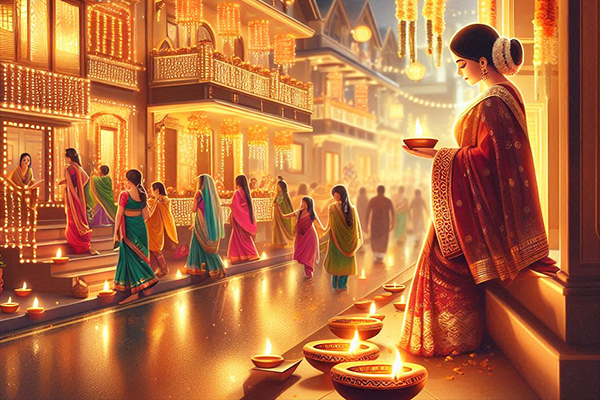
Dhanteras is more than just a day to buy gold and silver; it is a day filled with spiritual importance and inner significance. Dhanteras, also known as 'Dhantrayodashi,' is the first day of the five-day-long Diwali celebration and is considered one of the most auspicious festivals in the Hindu calendar. The name 'Dhanteras' is derived from the words 'Dhan,' meaning wealth, and 'Teras,' signifying the thirteenth day of the lunar calendar. This festival falls on the thirteenth lunar day of Krishna Paksha in the month of Kartik, and it marks the emergence of Goddess Lakshmi and other treasures during the Samudra Manthan or churning of the ocean. It is dedicated to the worship of Goddess Lakshmi, the goddess of wealth, and Lord Dhanvantari, the divine physician. Lord Kubera, the treasurer of the world, is also honored on this day, making Dhanteras a celebration of health, wealth, and prosperity.

Dhanteras is not just a festival of material wealth but also holds significant spiritual importance. It symbolizes the desire for both inner and outer prosperity. On this day, homes are cleaned and decorated in anticipation of Goddess Lakshmi's visit, as it is believed that she blesses households that are clean, bright, and welcoming. Lighting diyas and creating beautiful rangolis represent the dispelling of darkness and welcoming positive energies. The lighting of 13 diyas dedicated to Lord Yama, the God of Death, is also an important ritual to ensure the protection of loved ones.
One of the significant traditions of Dhanteras is purchasing gold, silver, or new utensils. Bringing these valuables into the house on this day symbolizes inviting wealth, fortune, and good luck into the home for the upcoming year. People also invest in household appliances, jewelry, and even health-related items, as Dhanteras is associated with prosperity and longevity. The alignment of planetary energies on Dhanteras is considered particularly favorable for financial investments, long-term wealth accumulation, and starting new ventures.
The festival also emphasizes spiritual enrichment. People are encouraged to turn inwards, practice yoga, meditation, and other religious sadhanas, and invite Goddess Lakshmi's blessings to attain inner peace, wisdom, and fulfillment. Goddess Lakshmi is believed to bless with abundant inner wealth, symbolizing spiritual growth, and opening the 'Sacred Hrit Padma Chakra'—the heart chakra at the core of one's being. By embracing this spiritual practice, one invites both material and inner abundance, fostering a harmonious connection between the spiritual and material worlds.

In essence, Dhanteras is about more than just financial prosperity; it is also about spiritual richness, health, and family connection. It is a time for families to come together, clean their homes, light lamps, and celebrate the arrival of Goddess Lakshmi, bringing with her the promise of good fortune, health, and abundance for the coming year. Whether it is through rituals, meditation, or purchasing valuable items, Dhanteras encourages individuals to embrace positivity, gratitude, and harmony, fostering both inner and outer prosperity.
National Ayurveda Day on Dhanteras: Significance & History

In addition to wealth, Dhanteras also highlights the value of health and wellness. National Ayurveda Day is celebrated on Dhanteras to highlight the importance of the ancient Indian medical practice of Ayurveda, which emphasizes holistic health and wellness. Shri Dhanvantari, the divine physician and deity of Ayurveda, is believed to have emerged from the ocean with a pot of Amrit (the elixir of life) during the Samudra Manthan, which makes this day significant for honoring health and longevity.
The celebration of National Ayurveda Day on Dhanteras symbolizes the close link between genuine wealth and good health, emphasizing that prosperity is not only material but also rooted in well-being. This association with Lord Dhanvantari, who is considered the founder of Ayurveda, underscores the cultural value placed on maintaining a healthy and balanced lifestyle.
By celebrating National Ayurveda Day alongside Dhanteras, people are reminded of the importance of health as true wealth. It also encourages the integration of Ayurvedic practices into daily routines, promoting overall wellness and longevity in line with ancient Indian traditions.
History Of Dhanteras

Traditional Indian customs and Hindu mythology have major influences on Dhanteras's history. It falls on the first day of the five-day Diwali celebrations, which begin on the thirteenth lunar day of Krishna Paksha in the month of Kartik. The Samudra Manthan, also known as the Churning of the Ocean, is one of the mythological events that gave origin to the festival.
Hindu mythology says that many precious items came from the ocean during the Samudra Manthan, a cosmic event in which the gods (Devas) and devils (Asuras) churned the ocean to get the nectar of immortality (Amrit). Goddess Lakshmi, the goddess of riches, prosperity, and good fortune, was one of the most important treasures to be found. It is believed that Goddess Lakshmi emerged from the churning ocean on this auspicious day of Dhanteras, bestowing wealth and abundance upon the planet. As a result, the main purpose of Dhanteras is to worship Goddess Lakshmi and ask for her blessings on wealth, health, and happiness.
The divine physician and Bhagwan Vishnu's incarnation, Lord Dhanvantari, is another figure associated with Dhanteras. During the churning, Lord Dhanvantari is said to have also surfaced from the ocean, holding a pot of Amrit, the nectar of immortality. On this day, people worship Lord Dhanvantari, the god of Ayurveda and medicine, in hopes of achieving excellent health and wellbeing. Because of his presence with the Amrit, which emphasizes the value of both riches and wellness, National Ayurveda Day is also observed on Dhanteras.

Dhanteras became a holiday that honors health, protection, and well-being in addition to prosperity over time. On Dhanteras, people started the tradition of purchasing gold, silver, and new kitchenware as a way to welcome wealth into their homes. An essential component of the ceremony is still lighting diyas, which are connected to the tale of King Hima and guarantee the safety and protection of family members.
Therefore, Dhanteras is a celebration that brings together mythology, tradition, and devotion; it honors the divine rewards of Lord Dhanvantari and Goddess Lakshmi while highlighting the significance of both material and spiritual prosperity.
How to Celebrate Dhanteras at Home: Traditions, Puja Rituals & Vrat Rituals

Let us explore how to celebrate Dhanteras at home in a way that maintains tradition and brings joy to everyone involved. Here’s a step-by-step guide to help you create a festive and positive atmosphere during this auspicious time:
Clean and Decorate Your Home
In honor of Maa Lakshmi, it is traditional to clean one's home from top to bottom on Dhanteras. In the evening, diyas (oil lights) are lit to welcome good fortune and rangoli patterns adorn the entryway.
Perform Dhanteras Puja
Set up images or idols of Lord Dhanvantari and Goddess Lakshmi on a Puja altar or Puja Chowki. Present some sweets, fruits, flowers, and a few mild incense sticks. Seek the blessings of the gods for health, riches, and success by reciting prayers or mantras devoted to them.
Buy Gold, Silver, or New Utensils
On Dhanteras, it is very auspicious to buy silver, gold, or new cooking utensils. Bringing these things into your house is a way to welcome prosperity and good fortune. Gold coins and silverware are also popular investments, and many individuals purchase jewelry.
Invest in Electronics or Appliances
Due to the strong belief that Dhanteras brings good fortune and plenty, it is a popular opportunity to purchase new technology and home equipment. At this time of year, many businesses have sales and discounts, so it's a great time to shop.
Purchase Health-Related Items
Purchasing health-related products, such as Ayurvedic remedies, pharmaceuticals, or exercise gear, is seen as auspicious during Dhanteras because of the deity Dhanvantari's association with health and Ayurveda.
Light Lamps and Diyas
Put out the diyas and lights at the front door and throughout the house as dusk draws near. This ceremony celebrates the coming of good fortune and light while also driving away evil spirits.
Exchange Gifts and Sweets
Bring joy to your loved ones and neighbours during Dhanteras by sharing sweets and presents. A traditional way to convey joy and well wishes is with the exchange of sweets such as laddoos, barfis, and dried fruits.
Donate to Charity
Giving back is another significant aspect of Dhanteras. Some think that helping others less fortunate can bring you benefits and increase your own happiness and prosperity. You may do this by contributing food, money, or other necessities.
Embrace the spirit of Dhanteras and bring health, wealth, and plenty into your life by following these rituals and making thoughtful purchases.
What to Do & What to Buy on Dhanteras: The cultural Importance

Find out what activities and purchases are best suited for Dhanteras in this comprehensive guide. Buying gold, silver, and new utensils is seen as auspicious, and this guide explains how these purchases symbolize prosperity and invite wealth into your home. It is a common practice to buy gold coins, jewelry, silver bowls, spoons and glasses or utensils, as well as Lakshmi & Ganesh idols in silver on Dhanteras.
For most activities, Hindus prefer to be guided by a mahurat, the auspicious time to make purchases. Pushya Nakshatra and Dhanteras are the two most auspicious occasions when people can buy gold and precious metals. Pushya Nakshatra is ruled by Jupiter and is also the birth star of Goddess Lakshmi.
Therefore, it becomes the most auspicious time to bring home the Goddess of Wealth. Because of its association with Lakshmi, Pushya is the most appropriate for buying gold and jewelry. When Pushya Nakshatra rises on a Thursday, it is called Guru Pushya Yoga and when it rises on Sunday, it creates the Ravi Pushya Yoga. As per Vedic astrology, both are auspicious days for buying gold.
How to Perform Dhanteras Puja at Home: Step-by-Step Guide
.jpg)
If you want to celebrate Dhanteras with devotion, this section provides a complete guide on how to perform the Dhanteras Puja correctly. You will learn how to set up the puja area, gather the necessary items, and invoke the blessings of Goddess Lakshmi, Lord Kuber and Lord Dhanvantari.
Prepare the Puja Area
After cleaning the puja space, place images or idols of Lord Dhanvantari and Goddess Lakshmi on a small altar or platform. Lighted diyas, rangoli, and flowers are to adorn the space.
Gather Puja Samagri
Flowers, fruits, sweets, incense sticks, camphor, a little kalash (pot), water, turmeric, kumkum, and fresh coins are all necessary for the puja. Plus, you'll need a little oil or ghee-filled lamp (diya).
Light the Diyas
Lighted diyas placed artfully all over the home, particularly at the entry and in the puja area, represent the removing of evil spirits and the extension of good fortune.
Perform the Sankalp
To ensure the family's happiness, health, and success, it is traditional to take a Sankalp, or vow, committing to do the puja with good intentions. It is customary to use the right hand to drink water, and to sprinkle it over the puja area while one makes the promise.
Offerings to the Deities
The idols of Lord Dhanvantari and Goddess Lakshmi should be presented with fresh money, fruits, flowers, and sweets. Filling the kalash with water and offering it to the gods is a ritual that represents wealth and purity.
Dhanteras Puja Mantra
The recitation of mantras and prayers honoring Lord Dhanvantari and Goddess Lakshmi is recommended. With sincere devotion, you should do the Lakshmi Puja and ask for her blessings of prosperity and good health.
Om Namo Bhagavate Maha SudharshanacVasudevaya Dhanvantaraye;
Amrutha Kalasa Hasthaaya Sarva Bhaya Vinasaya Sarva Roka Nivaranaya
Thri Lokya Pathaye Thri Lokya Nithaye Sri Maha Vishnu Swarupa Sri
Dhanvantri Swarupa Sri Sri Sri Aoushata Chakra Narayana Swaha
Meaning: We pray to the God, who is known as Sudarshana Vasudev Dhanvantari. He holds the Kalasha full of the nectar of immortality. Lord Dhanvantri removes all fears and removes all diseases. He is the well-wisher and preserver of the three worlds. Like Lord Vishnu, Dhanvantari is empowered to heal the Jiva souls. We bow to the Lord of Ayurveda.
Ganesh Puja Vidhi: Starting the Dhanteras Rituals

On Dhanteras evening, Lord Ganesh Is worshipped first. His idol is bathed and then anointed with sandal paste. He is placed on a red cloth, and sweet offerings are served to Ganpati. Light incense and diya in front of the idol. Chant the mantra for Ganesha and invoke his blessings to begin the Dhanteras puja vidhi.
Vakra-Tunnda Maha-Kaaya Suurya-Kotti Samaprabha
Nirvighnam Kuru Me Deva Sarva-Kaaryessu Sarvadaa ||
Meaning: O Sri Ganesha, of the curved trunk, large body, and with the brilliance of a million suns, please make all my works free of obstacles.
Kuber Puja Vidhi: Invoking the Lord of Wealth

On this evening, Lord Kubera is worshipped ritualistically and offered flowers. After you have offered him incense, diya, fruits and sweets, chant the following mantra to invoke Lord Kuber's blessings.
Om Yakshaya Kuberaya Vaishravanaya Dhanadhanyadhipataye
Dhanadhanyasamriddhim Me Dehi Dapaya Swaha ||
Meaning: Kubera, the lord of yakshas, bless us with wealth and prosperity.
Lakshmi Puja Vidhi: Worshipping the Goddess of Wealth

The best time for Lakshmi Puja on Dhanteras or Dhantrayodashi is during the Pradosh Kaal, which falls after sunset and lasts for about two and a half hours. In addition to worshipping the Idol of Goddess Lakshmi, you can also worship and energise the Mahalakshmi Yantra, which has powerful vibrations of Devi Lakshmi.
Before you begin, spread a new cloth on a raised platform. Place a handful of grains in the center, and on this base, place a Kalash (a pitcher) made of gold, silver, copper or terracotta. Fill three-fourths of the kalash with water mixed with ganga jal and place a betel nut, a flower, a coin and some rice grains in it. Arrange five kinds of leaves or mango leaves in the kalash. Place a metal dish on the kalash and fill it with rice grains. Draw a lotus with turmeric powder (haldi) over the rice grains and place the Idol of goddess Lakshmi over it, along with the coins.
Place the idol of Ganesha in front of the Kalash, on the right (South-West) direction. Also, place ink and books related to your business or occupation on the platform. Light a lamp and begin the puja by offering haldi, kumkum and flowers to the platform on which the kalash is placed.
Then offer haldi, kumkum and flowers to the water to be used for the puja. Then recite the following mantra of Mahalakshmi.
Om Shreem Hreem Shreem Kamale Kamalaleye Praseed Praseed
Om Shreem Hreem Shreem Mahalaxmiyei Namah
Meaning: Underlying vibration of all creation, the Goddess of abundance, cherishing your lotus feet, be pleased Great Laxmi Goddess, I bow to You.
Take some flowers in your hands, close your eyes and think of Goddess Lakshmi being showered with gold coins by two elephants standing on either side and chant Her name. Then offer the flowers to the idol. Place the idol of Lakshmi on a plate and bathe it with water, panchamrit (a mixture of milk, curd, ghee or clarified butter, honey and sugar) and then with water containing some gold ornament or a pearl. Wipe the idol clean and place it back on the kalash. Alternatively, you can just sprinkle water and panchamrit on the idol with a flower.
Now offer the Goddess sandal paste, saffron paste, perfume (ittar), haldi, kumkum, abeer and gulal. Offer a garland of cotton beads to the Goddess. Offer flowers, especially marigold and leaves of Bel (wood apple tree). Light an incense stick. Make sweets, coconut and fruits. Offer puffed rice and batasha. Pour some puffed rice, batasha, coriander seeds and cumin seeds over the idol. Worship the safe where you keep money and jewelry as a symbol of Lord Kuber. Finally, perform the Aarti for goddess Lakshmi.
Dhanvantari Puja Vidhi: Praying for Health & Well-being
Lord Dhanvantari is regarded as the founder of Ayurveda. People pray to Dhanvantari, seeking a cure for diseases and good health for their families. After the ritual of bathing Lord Dhanvantari and anointing his idol with vermillion, he is offered nine varieties of grains (Navadhanya). Now chant the mantra below.
Om Namo Bhagavate Maha SudharshanacVasudevaya Dhanvantaraye;
Amrutha Kalasa Hasthaaya Sarva Bhaya Vinasaya Sarva Roka Nivaranaya
Thri Lokya Pathaye Thri Lokya Nithaye Sri Maha Vishnu Swarupa Sri
Dhanvantri Swarupa Sri Sri Sri Aoushata Chakra Narayana Swaha ||
Meaning: We pray to the God, who is known as Sudarshana Vasudev Dhanvantari. He holds the Kalasha full of the nectar of immortality. Lord Dhanvantri removes all fears and removes all diseases. He is the well-wisher and preserver of the three worlds. Like Lord Vishnu, Dhanvantari is empowered to heal the Jiva souls. We bow to the Lord of Ayurveda.
Perform Aarti
Singing or chanting the Aarti song while circling the lighted diya in front of the deities is the proper way to do an Aarti. It is customary to light camphor and circulate the Aarti dish around the family for blessings.
Distribute Prasad
Prasad, the sweets and fruits provided during the puja, is meant to be shared among family members and friends after the ceremony as a token of goodwill and blessings.
Conclude the Puja
To end the puja properly, one should express gratitude to the gods for their favors and ask for their continual protection and prosperity all year round. All night long, in the puja room, keep the diya burning.
If you follow these procedures, you may do Dhanteras Puja at home with proper devotion, calling upon the blessings of Goddess Lakshmi and Lord Dhanvantari to bring you health and wealth.
Dhanteras Story: Legends and Myths Behind the Festival
Dive into the captivating stories behind Dhanteras that make this festival so rich in meaning.
King Hima was worried because his sixteen-year-old son was predicted to die of snakebite four days after his wedding. Then the young prince's bride devised a clever idea to stall Yama, the God of death.

On the third night, she had her attendants light up earthen diyas inside her palace, bathing it in light. She also laid out all her jewelry, gems and silver coins outside her husband's sleeping chamber. The young princess kept her husband awake by telling him stories, singing to him and involving him in a game of cards. When Lord Yama came at midnight in the form of a snake, he was so spell bound by the lights and the dazzling jewels that he could not go into the prince's sleeping chamber. He stretched out on top of gold coins and listened to the princess's stories and songs. In the morning, Yama the snake, quietly slithered away, impressed with the commitment of the princess. The young prince's life was extended owing to his bride and the day was celebrated as Yama Triyadoshi and Dhanteras in the kingdom. After this legend, there evolved a tradition of purchasing gold and silver coins stamped with images of Goddess Lakshmi and Lord Ganesha on Dhanteras.
According to the Bhagavata Purana, on this day, Lord Dhanvantari emerged from the sea with a pot of nectar or Amrit during the churning of the ocean. Lord Dhanvantari is the originator of the science of Ayurveda and the physician of the Gods. The avatar of Lord Vishnu, Lord Dhanvantari is worshipped on Dhanteras for good health and wellbeing. More significantly, another legend states that on this day, Goddess Lakshmi came out of the ocean during Samudra Manthan and therefore, she is invoked on this day for attaining her blessings.
Dhanteras Yama Deepam Daan: Honoring the God of Death

Dhanteras puja also involves the worship of Lord Yama, the God of death. Lord Yama is honored with Deep Daan, on this day for protecting one’s family and loved ones. After worshipping Yam Deva, 13 lamps should be lit.
Thirteen earthen lamps filled with sesame oil (til ka tale) should be placed outside the house, facing southwards (direction of Lord Yama), in the evening. A lamp is usually never kept facing southward except on this day. Then, reciting the following mantra, a person should offer obeisance to Yama, the Lord of Death.
त्युना दण्डपाशाभयाां कालेन श्यामया सह।
त्रयोदश्याां दीपदाना सूययजः प्रीयताां मम॥
(Tyuna Dandpashabhayam Kaalen Shyaamaya Saha
Trayodashyaam deepdana Sooyajah Preeyataam Mama)
Meaning: I offer these thirteen lamps to the son (Lord Yama) of the Sun deity (Surya) so that He liberates me from the clutches of death and bestows His blessings.
Dhanteras Tips: Interesting Facts About Dhanteras

Dhanteras is also celebrated as Lord Dhanvantri Jayanti. He is the God of Ayurveda and is known to bless the devotees with good health and protection from diseases. It is said that Lord Dhanvantri emerged out of the Ocean of Milk (Kshirsagar) during Samudra Manthan on Dhanteras. He held a pot of elixir (Amrit) in His hand and was called the Lord of medicine. It is thought to be one of the stories of how Dhanteras is named after Lord Dhanvantri.
The Goddess of wealth, prosperity, good luck, love and new opportunities, Maha Lakhsmi, is worshipped in Dhanteras. This puja is done during Pradosh Kaal (the duration of 2 hours after sunset). She bestows her devotees with abundance and fills the home with prosperity. It is one of the prominent days as per the Hindu calendar to worship Goddess Maha Lakshmi. However, it is on the 3rd day of Diwali, at the peak of the 5-days festival, when it is believed that Goddess Maha Lakshmi emerged from the Ocean of Milk (Samudra Manthan) which is celebrated with a big Lakshmi Puja.
If you are looking for an auspicious day or Muhurta to purchase any new appliance in the house or to make a new addition like a piece of furniture to the house, then Dhanteras is the perfect day.
It is a tradition in numerous Hindu families to buy gold coins, bars or jewelry on Dhanteras. Gold is a symbol of opulence and is highly valued, which is why it grows 13 times more when purchased on Dhanatrayodashi. The Lord of wealth, Kubera, blesses the home and makes the worshipper prosper.
Diyas (oil lamps) have to be lit everywhere in the house to brighten up the space. This draws sacred energies into the home and creates a spiritual environment. Lighting clay oil lamps is an important part of Dhanteras and the Diwali festival altogether.
One can start a new venture or new business on the auspicious day of Dhanteras. It brings good luck and makes new beginnings successful. Those who are waiting for a favorable Muhurta can commence their new business from Dhanteras.
Dhanteras Vrat Vidhi: The Fasting Rituals
To invoke Goddess Lakshmi and Lord Dhanvantari for good health, plenty, and prosperity, many devotees conduct a vrat (fast) on Dhanteras. Devotees get up before the sun comes up to take a sacred bath, which represents cleansing, to start the day. Observers of the fast may choose to eat fruits, milk, or other mild sattvic foods throughout the day, while some choose to fast entirely.
Fasting is accompanied by prayer and the recitation of mantras devoted to Lord Dhanvantari and Goddess Lakshmi. Offerings like flowers, sweets, and fruits are put before the deities' images or statues in the puja area. All day long, people pay close care to lighting diyas and keeping the surrounding area clean and auspicious.
After the evening puja and diya lighting, the fast is broken. In many cultures, the appearance of the moon or stars marks the beginning of the fasting period. To end the vrat, one eats the prasad, which contains the puja offerings, and then shares the leftovers with family members.
It is believed that by doing the Dhanteras vrat, one might bring good fortune, health, and protection from evil spirits into one's house.
Dhanteras Vrat Katha
Once upon a time, Goddess Lakshmi appeared before the wife of a humble farmer. She instructed the farmer’s wife, 'After taking your bath, worship this idol of Goddess Lakshmi that I have crafted for you. Only then proceed to cook your meals, and whatever you wish for will be granted.' The farmer’s wife obeyed the instructions faithfully.
As a result of her devotion and Goddess Lakshmi's blessings, their humble home was soon filled with grains, wealth, precious jewels, and gold. Prosperity and happiness followed, and the farmer’s family enjoyed a comfortable and blissful life for twelve years. However, after these twelve years, it was time for Goddess Lakshmi to leave.

Lord Vishnu himself arrived to take Goddess Lakshmi back. But the farmer, unwilling to let her go, pleaded for her to stay. At this, Lord Vishnu explained, 'No one can contain Goddess Lakshmi forever. She is known to be restless and fickle, never staying in one place for too long. It was due to my curse that she stayed here to serve you for twelve years, but now her time is up.'
Even with this divine explanation, the farmer was determined and insisted that Goddess Lakshmi should not leave. Seeing his devotion, Goddess Lakshmi decided to grant him a way to keep her blessings. She said, 'If you wish me to stay, then follow what I say. Tomorrow is Dhanteras. You must clean your home thoroughly, making it spotless. In the evening, light a lamp filled with ghee, and perform my worship. Place a copper urn filled with coins as an offering to me, and I shall reside in that urn. However, during the puja, you will not be able to see me.'

Goddess Lakshmi continued, 'If you perform this one-day worship, I promise that my blessings will remain in your home throughout the entire year.' With that, she disappeared, spreading her divine light in all directions.
The next day, on Dhanteras, the farmer did exactly as Goddess Lakshmi had instructed. He purified his home, lit the lamps, and performed her worship with devotion. True to her word, Goddess Lakshmi blessed his household, and their home was once again filled with prosperity and abundance.
Since that day, every year on Dhanteras, people perform the worship of Goddess Lakshmi, lighting lamps and invoking her blessings for a prosperous year ahead.
May Goddess Lakshmi's divine light illuminate your home and heart this Dhanteras, and may you always be blessed with abundance, peace, and prosperity.
Booking Dhanteras Pujas: Get the Dhanteras Puja Service from Rudra Centre
We at Rudra Centre have been performing the above-mentioned pujas since 1997. Our erudite team of Karmakandi priests from Varanasi (Kashi) Gurukul System have a long experience in carrying out the following Vedic rituals based on the birth details and Nakshatras of the devotees.
The puja prasad, along with energized Yantra, Rudraksha and photographs, is couriered to the clients within 5 to 7 days after completing the Puja. The birth details (name, date, time and place) are required while ordering the puja.
Rudra Centre Puja Services will provide the contact number of the head priest to facilitate calling during the Sankalpa and yagna.
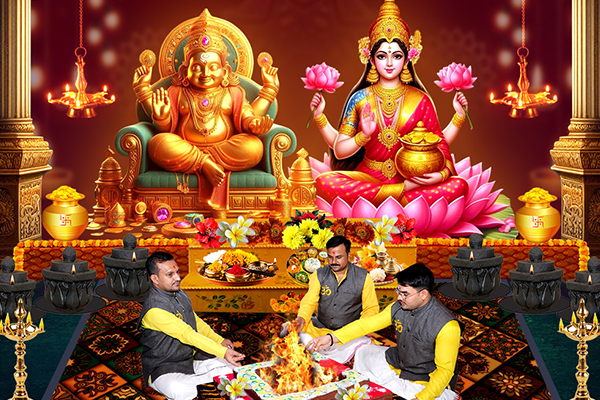
Products associated with Dhanteras
Rudra Centre is a one stop solution to all spiritual and religious tools. All the sacred items that are either required to venerate or to enhance spiritual and religious practices like Puja, meditation, or sadhna are given below.
7 Mukhi Rudraksha

The 7 Mukhi Rudraksha is believed to represent Goddess Lakshmi and is worn to attract wealth, prosperity, and spiritual growth. You can buy the most genuine and authentic Rudraksha from Rudra Centre.
Silver Idols

If you buy a silver deity idol from Rudra Centre on Dhanteras, you're bringing good fortune, plenty, and heavenly benefits into your house for the next year.
Sampoorna Laxmi Yantra

Bringing the blessings of Goddess Lakshmi into the house and improving financial stability are two of the many purported benefits of the Sampoorna Laxmi Yantra, available at Rudra Centre and said to be an efficient tool for attracting money and success on Dhanteras.
Dhanvantri Puja

Buy Dhanvantri Puja & Yagna Service
Invoking the blessings of Lord Dhanvantari into the house and assuring protection from diseases requires performing the Dhanvantari Puja on Dhanteras, which can be accessed via Rudra Centre. This ritual is thought to be effective and brings good health.
Religious Coins

During the Dhanteras, gold and silver coins featuring Indian deities, which can be purchased at Rudra Centre, are highly esteemed for both worship and giving. They are said to bring riches, prosperity, and heavenly benefits into the household.
Gold & Silver Gold Pendants

During the auspicious festival of Dhanteras, it is believed that purchasing gold or silver pendants which include sacred symbols, would bring good fortune, prosperity, and the blessings of the gods into one's life. You can buy such pendants from Rudra Centre.
Final Reflection.
Diwali begins with the celebration of Dhanteras on the thirteenth day of the Krishna Paksha in the Kartika month. The goddess of prosperity, Lakshmi, and the celestial healer, Lord Dhanvantari, who is said to have risen from Samudra Manthan carrying the elixir of life, are worshipped on this day. On Dhanteras, people clean and adorn their houses, light diyas, and conduct special pujas to bring good fortune, health, and wealth into the house. In the past, people used to think that buying new cookware, jewelry, or other signs of prosperity would help their finances. Dhanteras is an important period of preparation and devotion during Diwali festivities because the tales and traditions connected with it emphasize the value of physical health, material prosperity, and spiritual wellbeing.

-in-Astrology.jpg)
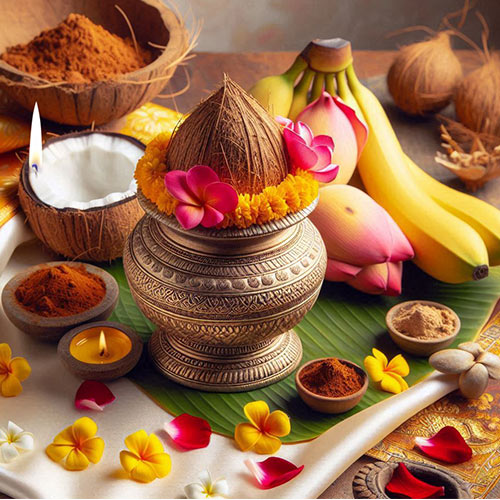

.jpg)
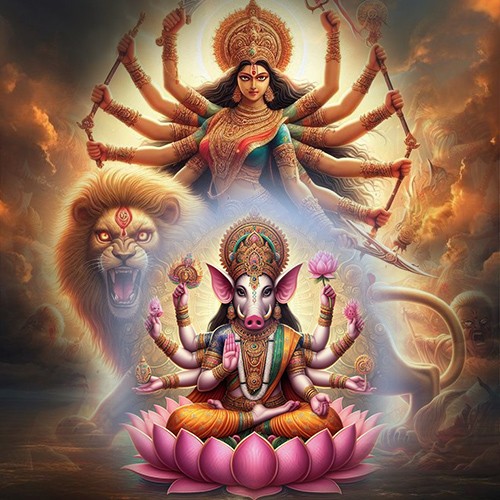


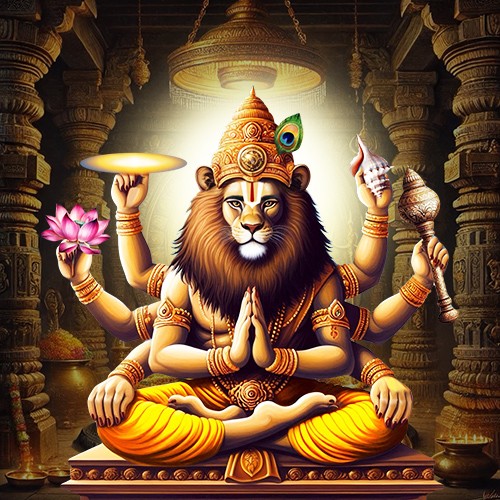
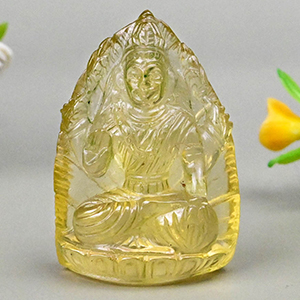
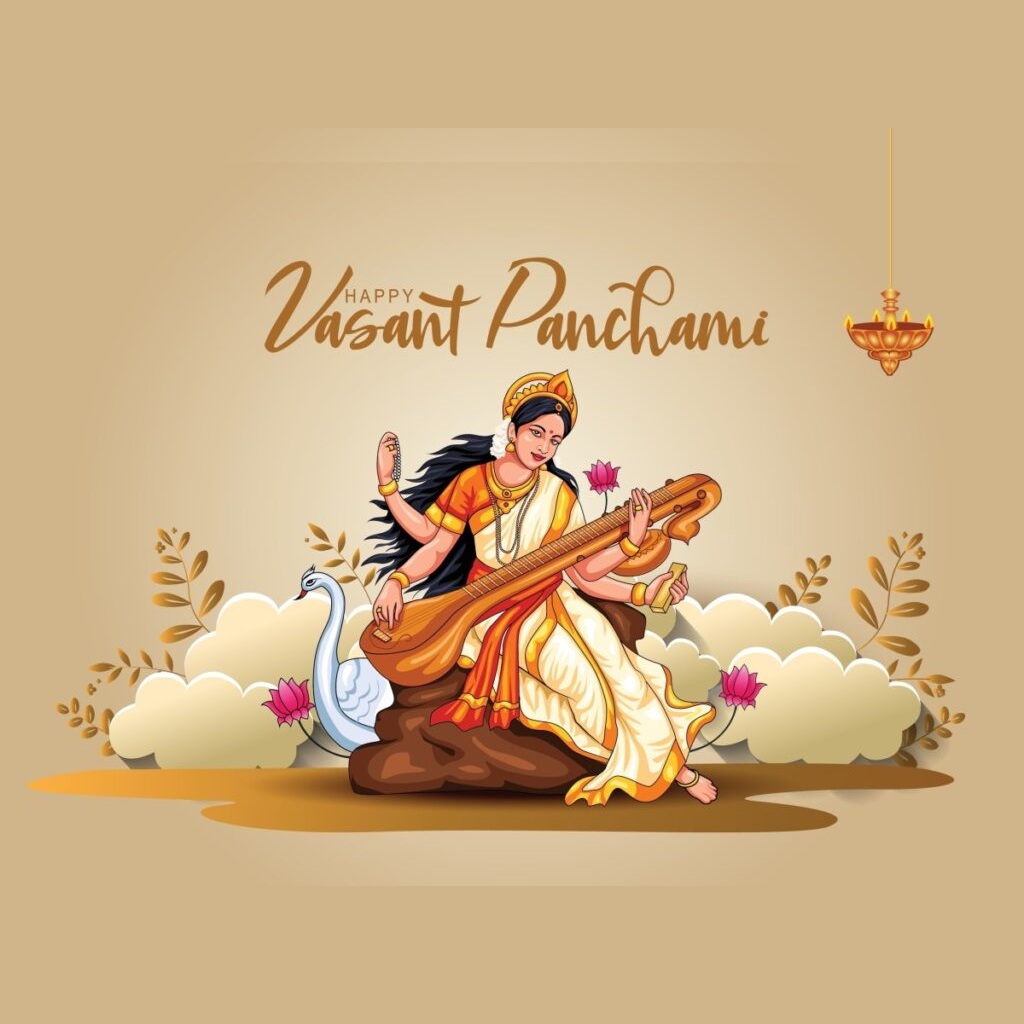
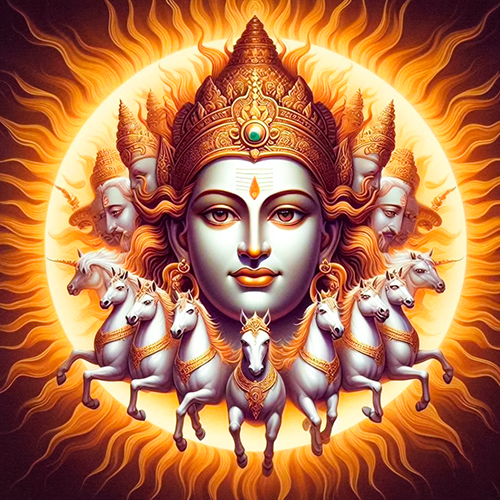
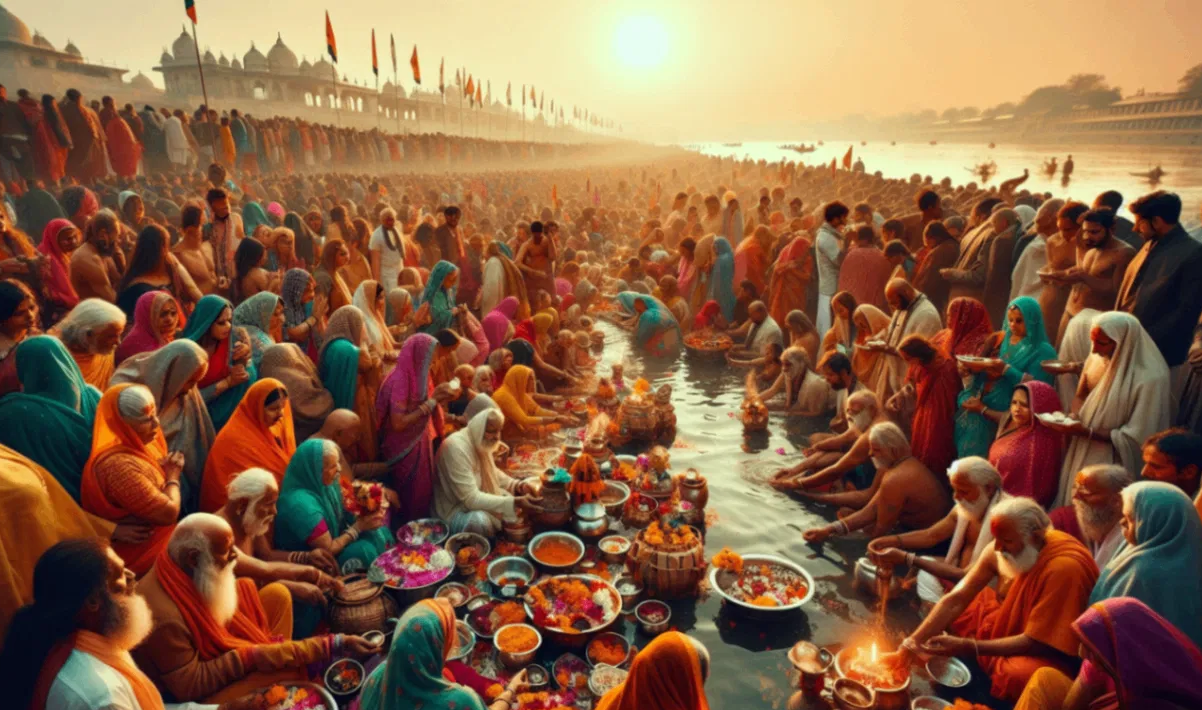
Comments 0
Leave your thought here